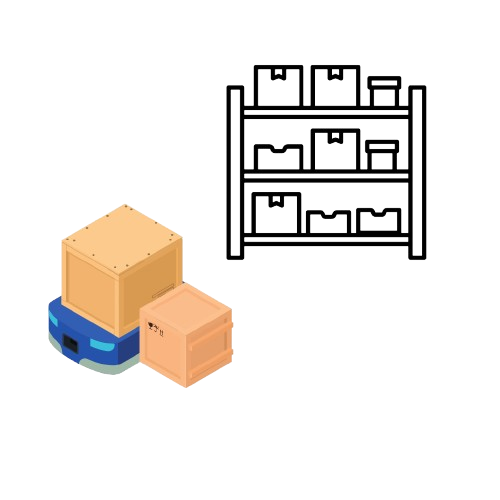On this page
Frequent defects in manufacturing can severely impact production quality, efficiency, and profitability. If you find yourself constantly reacting to defects, it’s crucial to address the root causes and implement effective solutions to prevent them from recurring. Let’s explore why defects happen, how to identify their sources, and ways to prevent them moving forward.
Why Do Defects Occur?
Defects in manufacturing are often a symptom of underlying issues within the production process. Understanding these causes is the first step toward effective resolution. Here are some of the most common culprits:
-
Poor Material Quality: Utilizing substandard raw materials is a primary source of defects. Regardless of how well your machinery operates, inferior inputs will lead to poor outputs. Ensuring high-quality raw materials is essential for maintaining production standards.
-
Inadequate Machine Maintenance: Machines are the backbone of any manufacturing operation. If they are not properly maintained, they are prone to breakdowns, which can result in minor discrepancies escalating into significant defects. Regular maintenance schedules can prevent these issues.
-
Operator Error: Human error is a significant factor in many defects. Operators who lack adequate training or experience may make mistakes that compromise product quality. Investing in comprehensive training programs for your team can mitigate these risks.
-
Process Inefficiencies: Sometimes, the root cause of defects lies within the process itself. An unoptimized workflow can create bottlenecks, stressing equipment and leading to defects. Continuous assessment of processes is necessary to identify areas for improvement.
Identifying the Root Causes of Defects
When defects start to appear frequently, the first step is to pinpoint their root causes. It’s essential to avoid jumping to conclusions without a thorough investigation. Here are three effective methods to help identify the issues:
1. Root Cause Analysis (RCA): This technique involves asking a series of "why" questions to dig deeper into the problem. For instance, if a machine breaks down, investigate whether it was due to insufficient maintenance or operator overload. This method helps uncover the fundamental issues that need addressing.
2. Statistical Process Control (SPC): SPC is a method of monitoring your production processes to identify potential issues before they escalate into defects. By tracking variations in your process, you can catch anomalies early, make necessary adjustments, and prevent defects from multiplying.
3. Pareto Analysis: This method, based on the 80/20 rule, helps you identify which defects have the most significant impact on your production process. Often, 80% of the problems result from just 20% of the causes. Focusing on these high-priority issues can significantly reduce your defect rates.
4. Fish Bone diagram: This method helps in identifying the root causes of each effect. Use this when identifying possible causes of a problem
Preventing Defects Before They Happen
Once you’ve identified the root causes of defects, the next step is to focus on prevention. Stopping defects before they occur is far more efficient than dealing with them post-production. Here are effective strategies to consider:
1. Routine Machine Maintenance: Establishing a routine maintenance schedule is one of the simplest yet most effective ways to prevent defects. Well-maintained machines operate more efficiently and are less likely to break down or produce defects. Ensure your maintenance team is diligent in performing regular checks.
2. Quality Control Checks: Implementing quality control checks at various stages of production can help catch defects early. By conducting spot checks, you ensure that any issues are identified and addressed before they lead to larger problems.
3. Operator Training: Insufficient operator training is often an overlooked cause of defects. Well-trained operators are better equipped to run machines correctly, spot potential issues, and avoid mistakes. Continuous training programs can greatly reduce defect rates.
4. Automation and Error-Proofing: Automating parts of your manufacturing process can significantly reduce the risk of human error. Additionally, implementing error-proofing mechanisms, such as poka-yoke devices, ensures that mistakes do not lead to defects. This approach can be a game-changer in eliminating common issues.
Continuous Improvement: The Key to Long-Term Success
No matter how effective your manufacturing process seems today, there's always room for improvement. Continuous improvement is vital for staying ahead of defects. Consider these strategies:
1. Adopt Lean Manufacturing Principles: Lean manufacturing focuses on minimizing waste and maximizing value. By optimizing TIMWOODS, i.e. understanding the negative issues and streamlining them, one can boost performance and gain a competitive edge.
2. Implement Six Sigma Methodology: Six Sigma aims to improve quality by identifying and removing the causes of defects. This methodology emphasizes process control, reducing variability, and striving for near perfection.
3. Embrace the Kaizen Philosophy: The Kaizen philosophy promotes continuous, incremental improvements. By fostering the culture of Kaizen, you encourage everyone in the organization to take responsibility for defect reduction and process enhancement.
Conclusion
Are frequent defects impacting your production quality and profitability? It's time to take action! At GATE Corp-experts in Contract Manufacturing, we specialize in helping manufacturers like you implement effective market strategies tailored to your unique needs.
Don’t let defects hold your business back. Contact GATE Corp today to discover how we can help you streamline your operations and enhance your production quality. Together, we can turn challenges into opportunities for growth and success!


.png)










